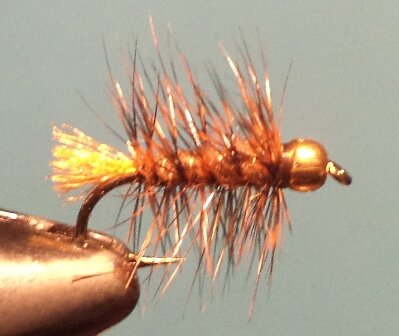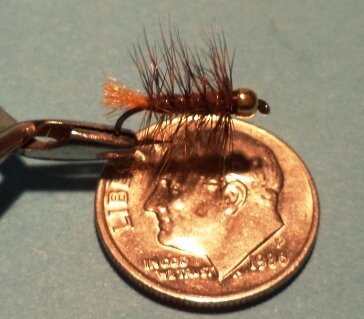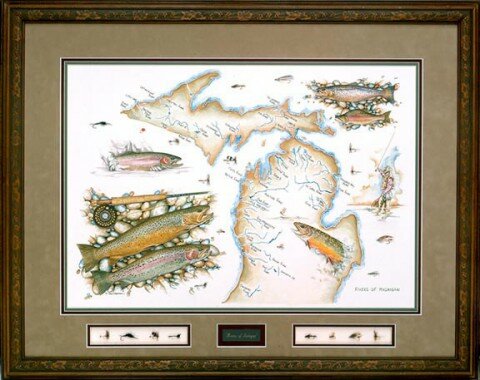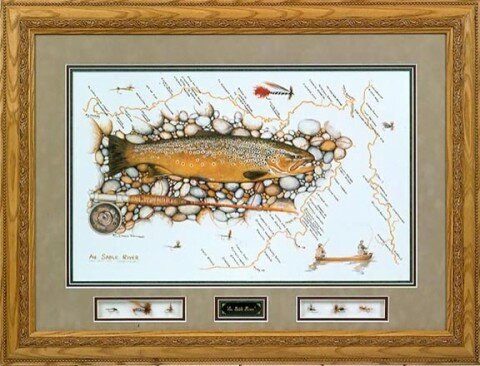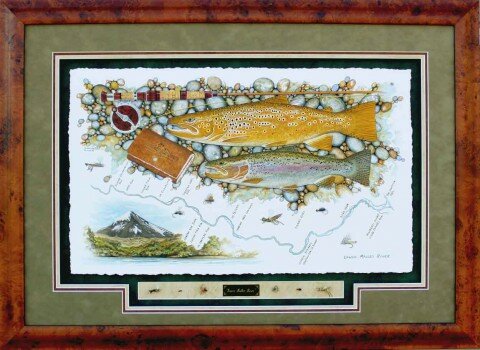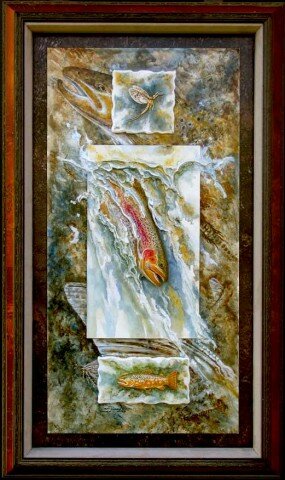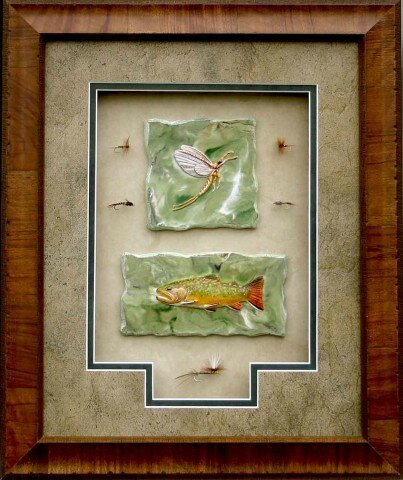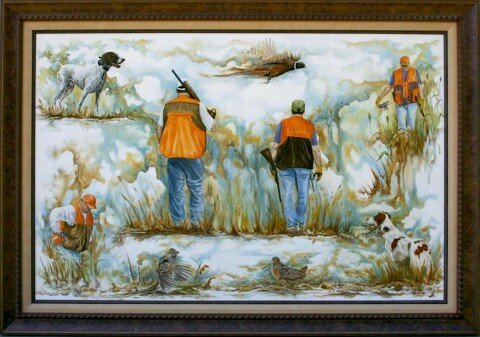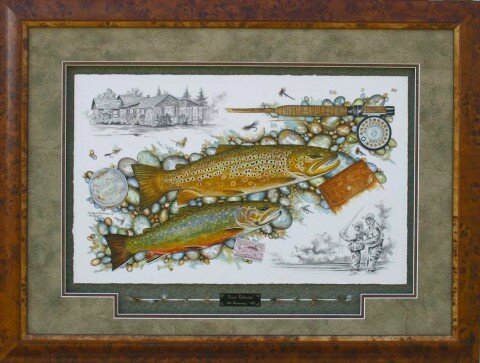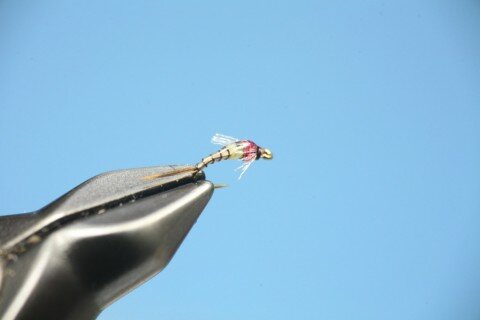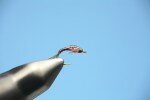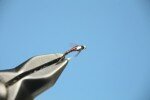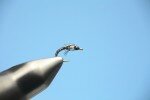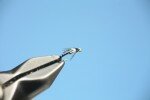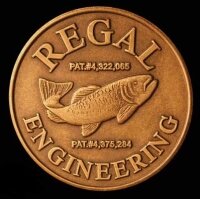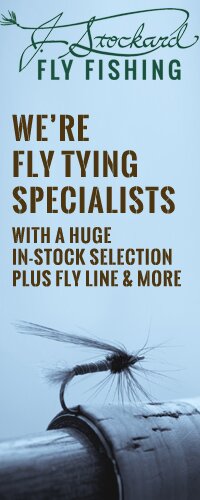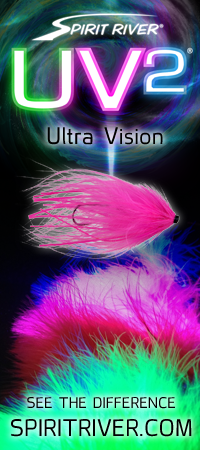I made the trek up north on Saturday to the 14th Annual Great Lakes Council Fly Tying Expo in Holt, Michigan on Saturday, Dec. 7th. There were about 80 fly tyers on hand, so I was definitely in my element. I have never been to this show before, but heard good things about it from many other tyers. Many types of flies were well represented from tiny midges to big musky streamers. Before I bore you too much, I’ll run down some of the highlights, as I made my way around from table to table.
My first stop was Jerry Regan. Jerry is a well known tyer of classic Michigan patterns with a wealth of knowledge on the history of Grayling fly fishermen and tyers. He is one of the first tyers that showed me some tips and techniques that really helped get me started tying Michigan classic fly patterns. While at his table, Jerry was talking about the importance of quality deer hair and began by tying his Brown Drake Nymph for a gentleman asking about the pattern. Jerry had an awesome shadow box with most of the flies he ties included. After catching up with Jerry, I was ready to see what else was happening.

Jerry Regan
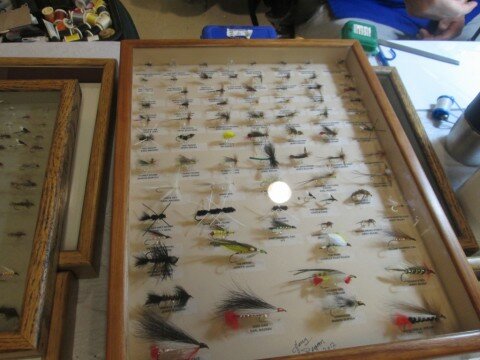
Jerry Regan’s shadow box
I then stopped to see what Eli Berant was working on. If you missed it, I just posted several of Eli’s flies here on FrankenFly. Eli was tying a big streamer when I walked up using synthetic yak hair. He said it’s softer material than real yak and I agree, because I felt the material when he mentioned it. He said he really liked the way it moved in the water and he bought it at Nomad Anglers, who was also at the show. Eli mixed in some flash with the synthetic yak and it looked amazing! We also talked about him adding a foam popper to the body of his Foosa to try and give it a different action.
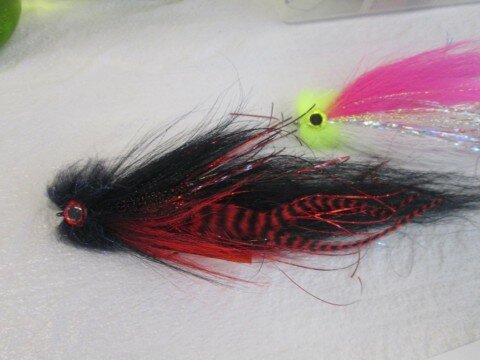
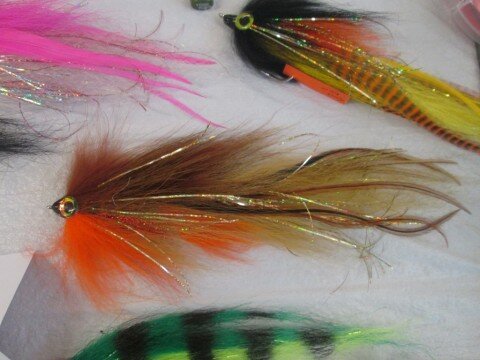
Foosa
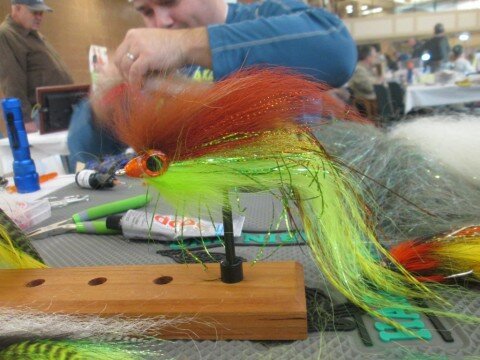

Eli Berant
Mike Schmidt was next sitting next to Matt Zudweg of Boneyard Fly Gear and Ethan Winchester and Zach Ginop of Boyne Outfitters. Mike was setup to tie some meaty streamers and had some Junk Yard Dogs and Drunk n’ Disorderlies on display. He had his new hats and t-shirts for sale too, so I couldn’t pass up a radical new hat!
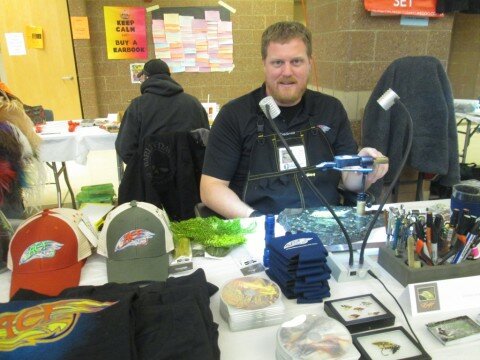
Mike Schmidt

Drunk n’ Disorderlies and Junk Yard Dogs
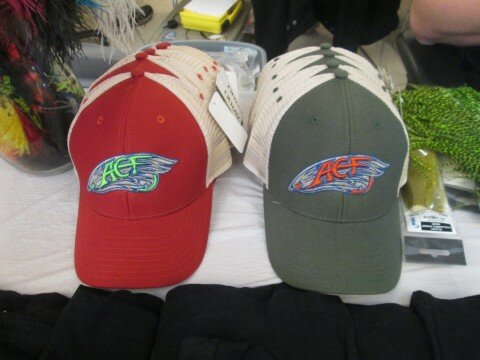
Angler Choice Flies hats
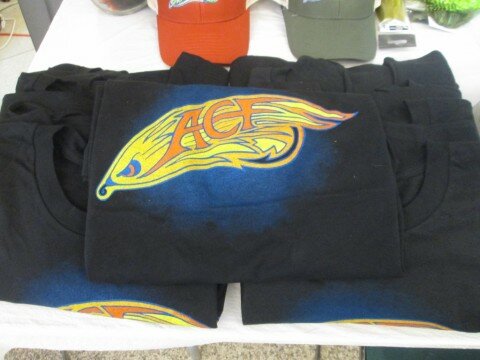
Angler Choice Flies t-shirts
Matt Zudweg had just finished a busy November guiding on the Muskegon River and showed me pics of some monster steelhead, and I mean MONSTER! I was wearing a Bone Yard Fly Gear hat and hoodie, so I was representing! I even had a few people ask if I worked for Matt, haha! He is just a talented artist and makes some cool gear. Check out his website to see what I mean.
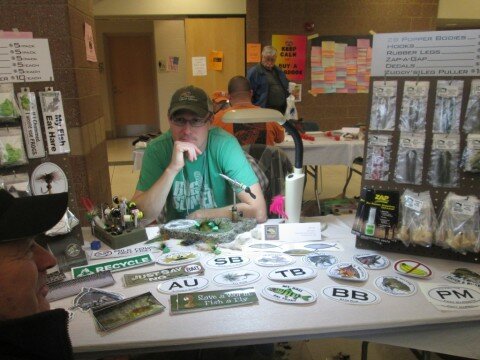
Matt Zudweg
Ethan of Boyne Outfitters had some nice looking little streamers he was tying. He took a Mike Schmidt pattern and made a variation while reducing the size a bit. Zach was tying an order of hex flies. Find out more about Boyne Outfitters on their website.
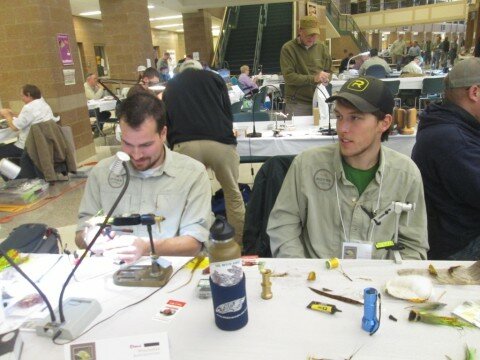
Ethan Winchester and Zach Ginop
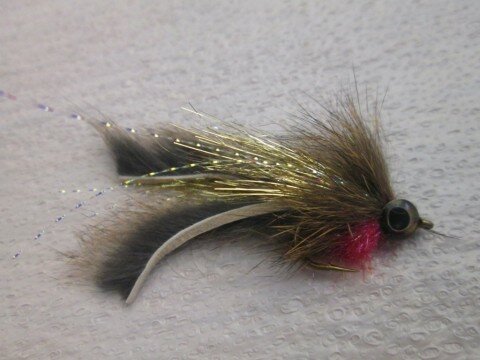
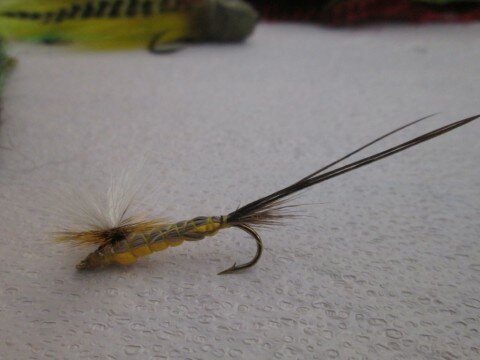
hex fly
Brian Kozminski of True North Trout couldn’t make it to the show, but mentioned I should stop and see Alex Cerveniak. Alex was tying mouse patterns trying to stock up for next season. He said 100 should do and that he had caught many trout on mice last season. Last month Alex along with Jason Tucker from Fontinalis Rising took one hell of a road trip fishing 5 rivers of 5 Great Lakes in 5 days. Read more about it on Jason’s blog.
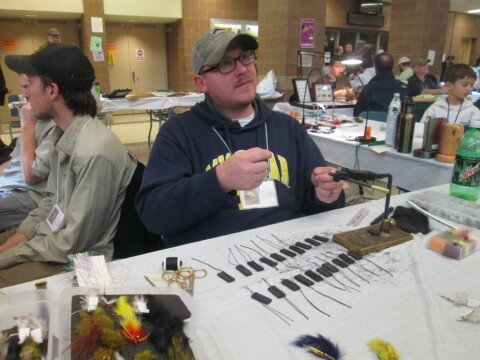
Alex Cerveniak
Kevin Compton of Performance Flies was there from Ohio. I picked up some Icelandic Sheep mixture from him. Mike Schmidt tied up a sweet streamer using this same stuff (see below). I have been talking to Kevin for awhile about doing something for FrankenFly. He decided on the pattern I have in the photo below, but I will have more information about it in a future post.
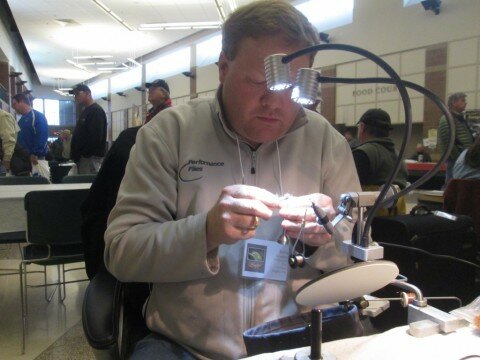
Kevin Compton
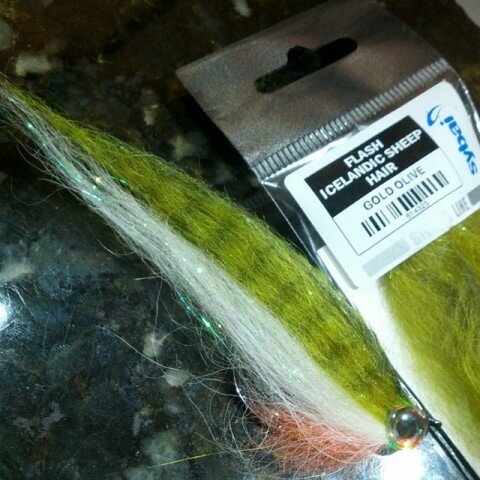
Mike’s streamer using Performance Flies Flash Icelandic Sheep Hair

Becca Schlaff had her beautiful art on display. The word “beautiful” doesn’t even begin to do it justice. Markings of brook, rainbow, and brown trout headlined her stand. She also had a new abstract piece of a carp. If you are looking for something to hang in your tying room or anywhere in the house for that matter, look no further. Check Becca’s website at http://becca-schlaff.com.
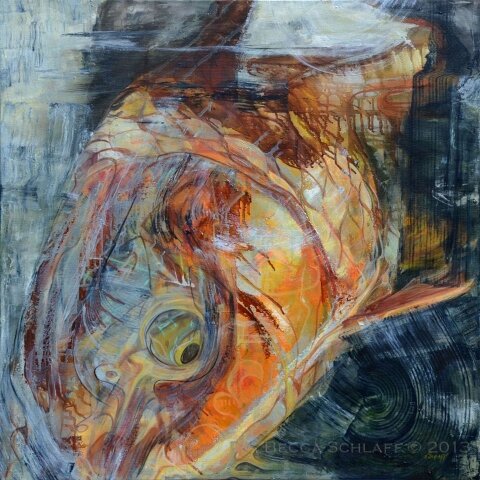
Becca Schlaff painting of a carp
My buddy Todd Schotts was tying a couple of cool patterns. I love the names Todd gives his flies. He was tying the Madame X Double D and Wang Dang Doodle ephron. He also showed me his Bad Hair Day pattern with the plastic curly tail and rattle. Todd ties cool stuff, no doubt.
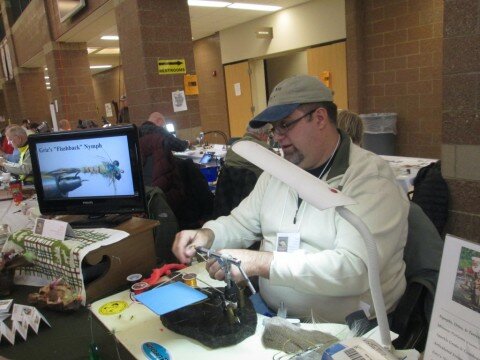
Todd Schotts
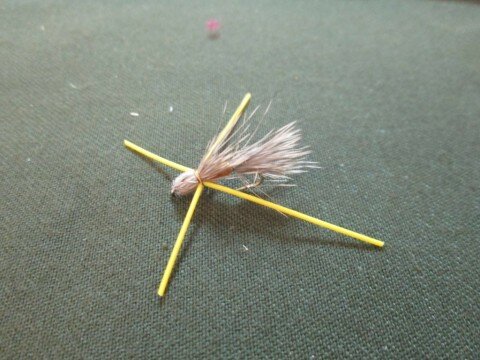
Madame X Double D
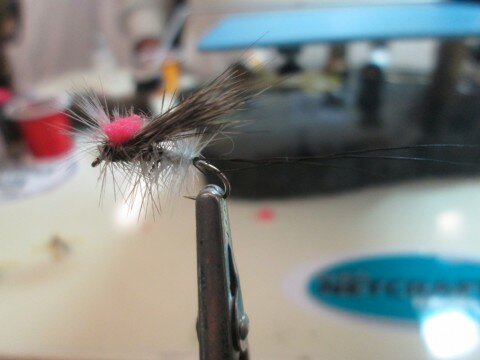
Wang Dang Doodle ephron

Bad Hair Day
Manager of the fly shop at Cabela’s in Grandville, MI, Steve DeQuoy grabbed my interest. He was tying some different bugs, like one that mimics an alvin fry. As I watched Steve tie, a friend of his stopped by and asked me if Steve showed me this killer pattern that he loves to fish. Steve kind of gave him a look, but he showed me the pattern. It was a slick looking fly when it was wet. I can see why it works. Check it out below. I’ll call it Steve’s Secret.
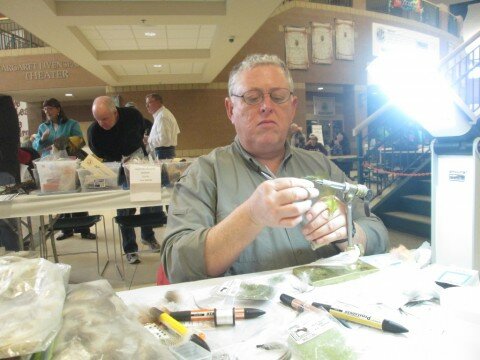
Steve Dequoy
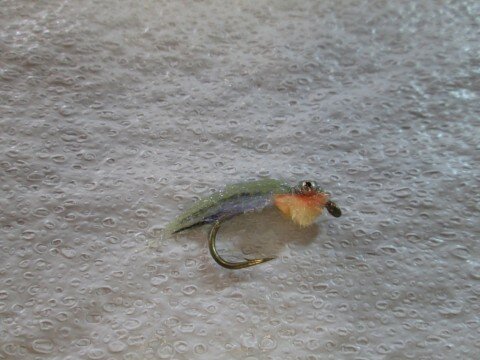
Steve’s Alvin imitation

Steve’s Secret
Matt Erny and Matt Svoboda were sitting at adjacent tables tying away. Matt Erny was tying a cool streamer for smallmouths. Check out his website Streamers Fly Fishing for more. Matt Svoboda was tying a pink head leech pattern made popular by Kevin Feenstra. Look for both tyers in the future on FrankenFly.

Matt Erny
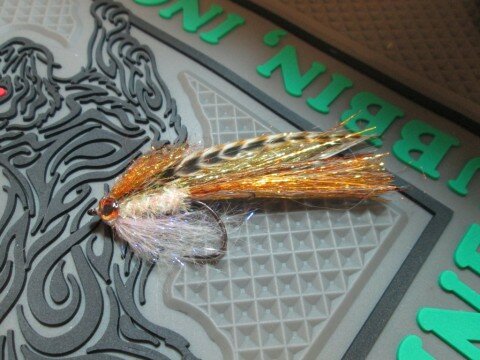
Matt Erny smallie pattern
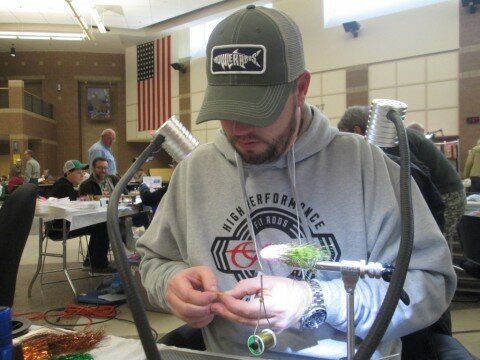
Matt Svoboda
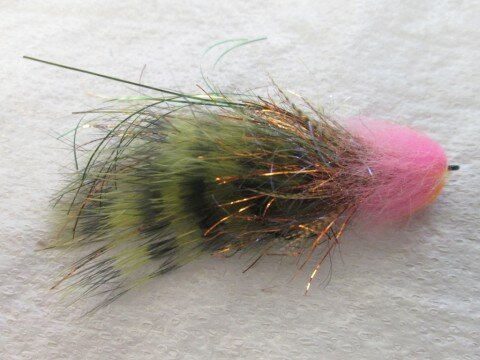
I had a great time at the Holt show and I would recommend going if you are interested in fly fishing or tying. I plan to attend next year as well. Here is their website: Great Lakes Council of the Federation of Fly Fishers.
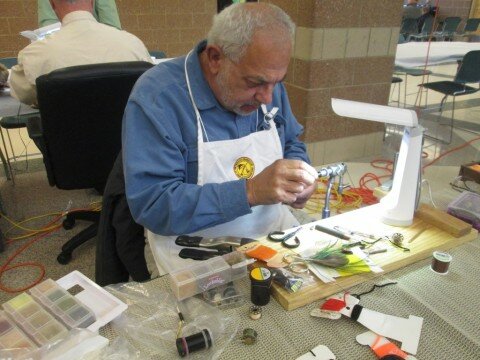
Jim Weakland

Bear Andrews
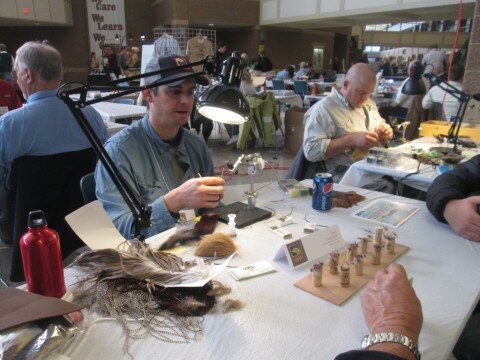
Josh Greenberg of Gates Au Sable Lodge
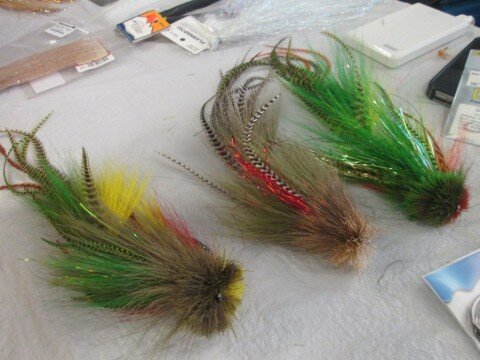
big pike streamers by Schultz Outfitters
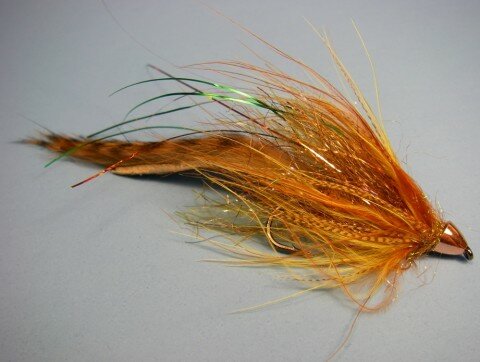

 I’ve always had a fascination with bee patterns. To that end I created a couple of patterns in years past and fished them with a moderate degree of success. But they weren’t as productive as I thought they should be. I finally decided that I should make a science of it; systematically determining the best situations, river conditions and seasons to use bee patterns in. In other words; study the bee.
I’ve always had a fascination with bee patterns. To that end I created a couple of patterns in years past and fished them with a moderate degree of success. But they weren’t as productive as I thought they should be. I finally decided that I should make a science of it; systematically determining the best situations, river conditions and seasons to use bee patterns in. In other words; study the bee.
